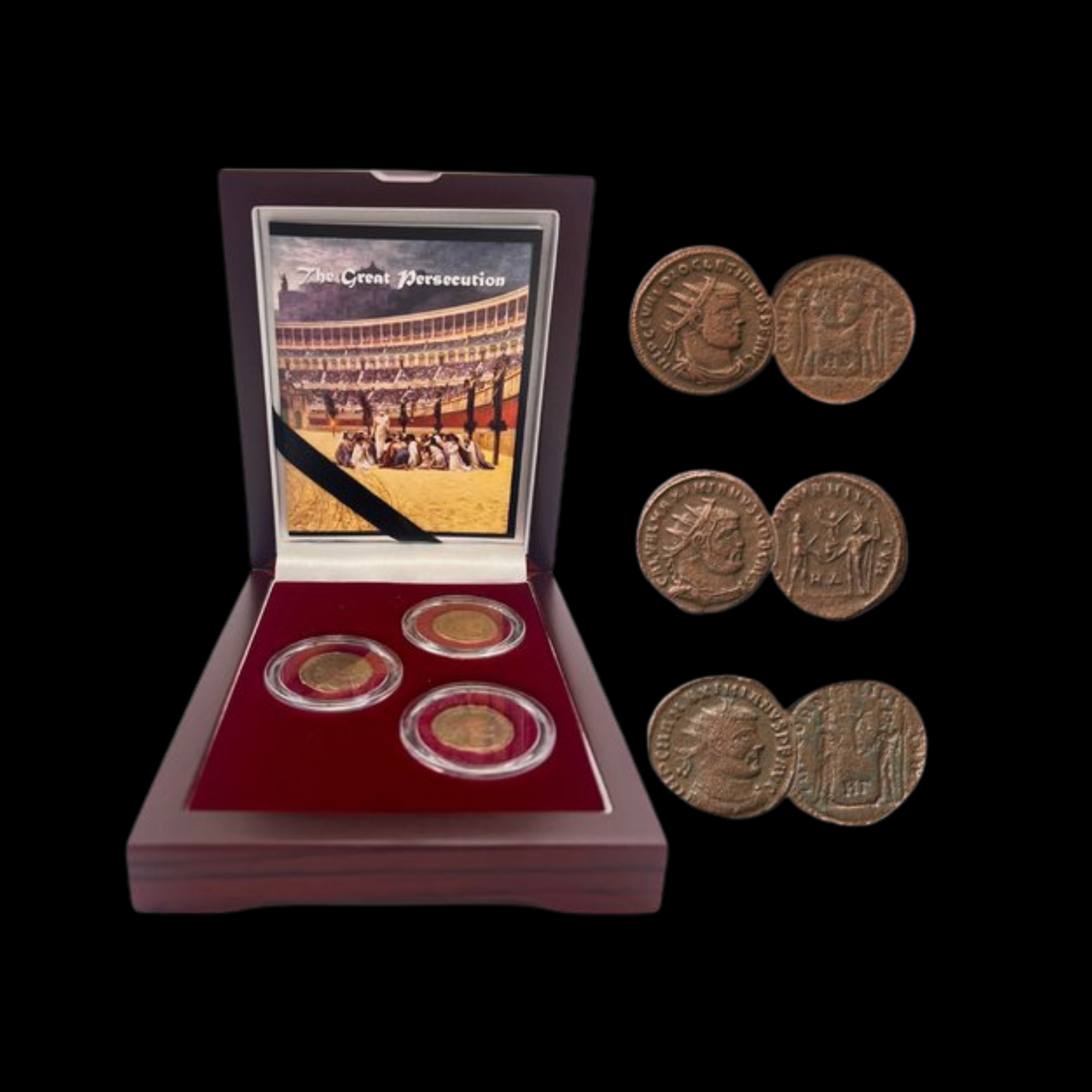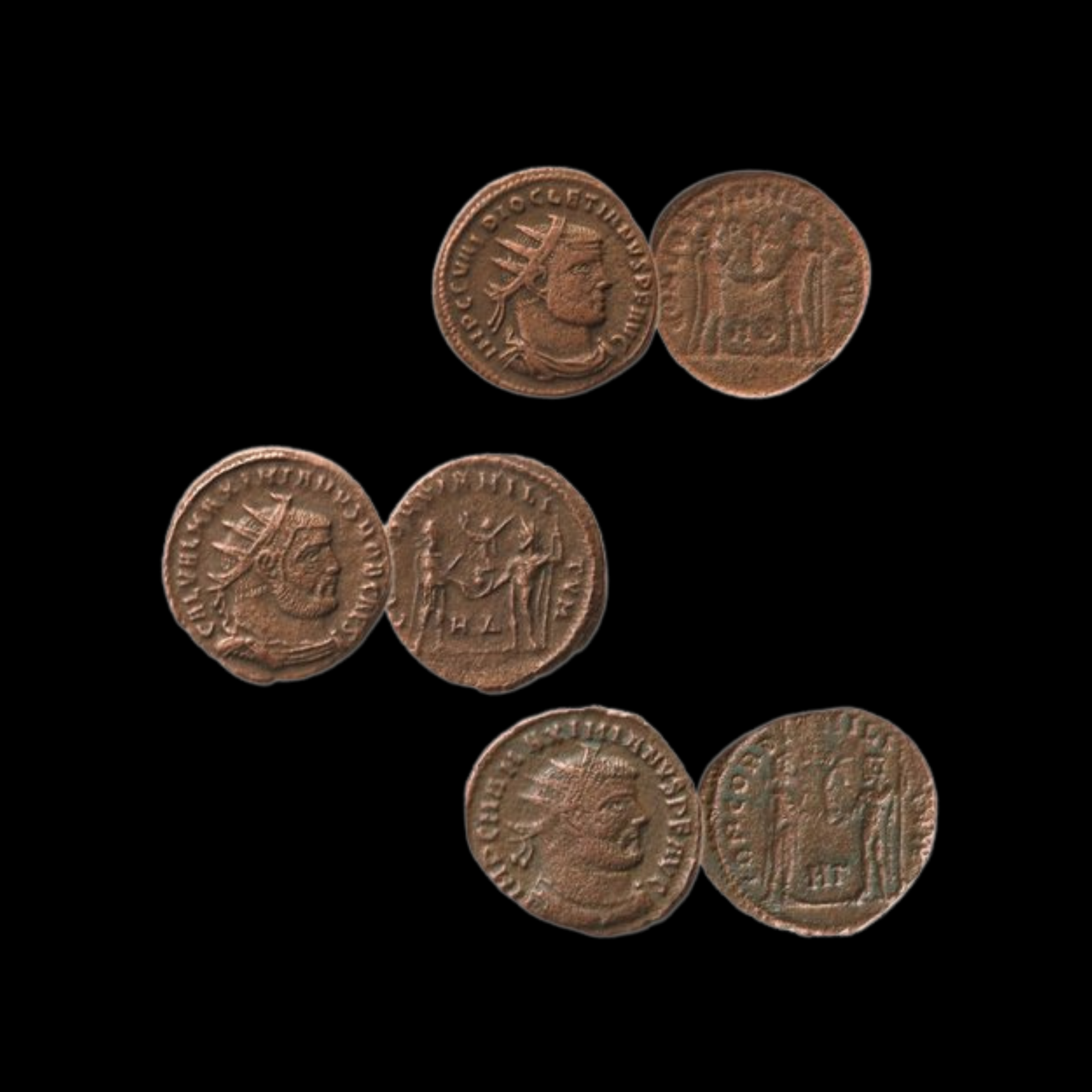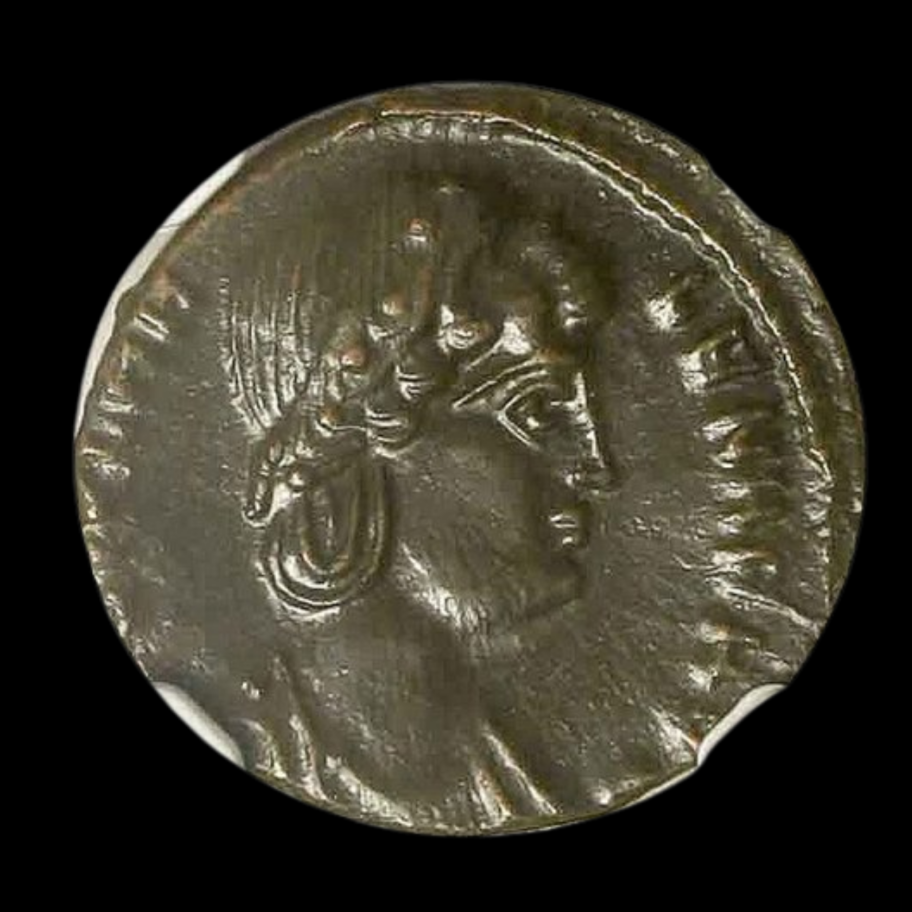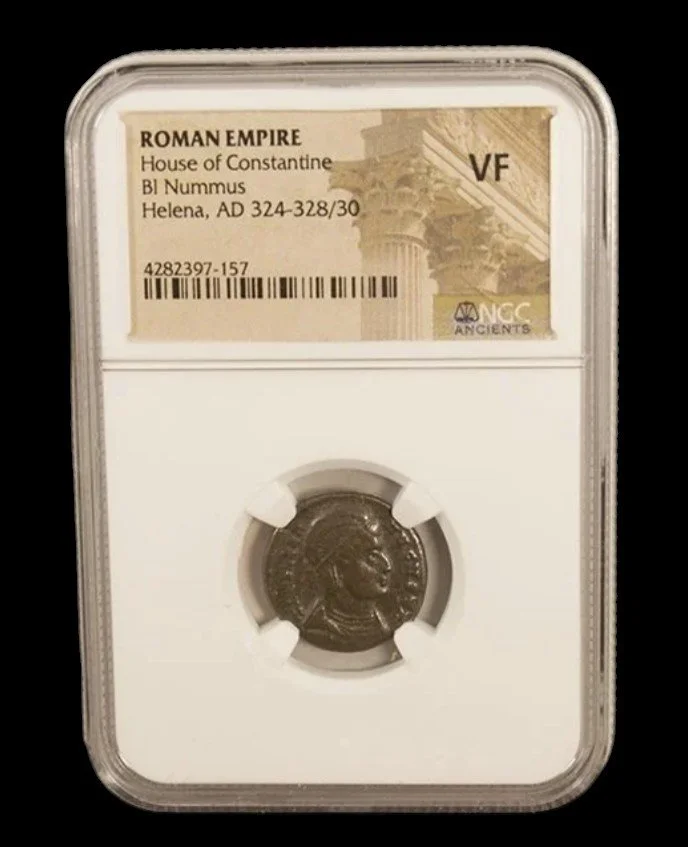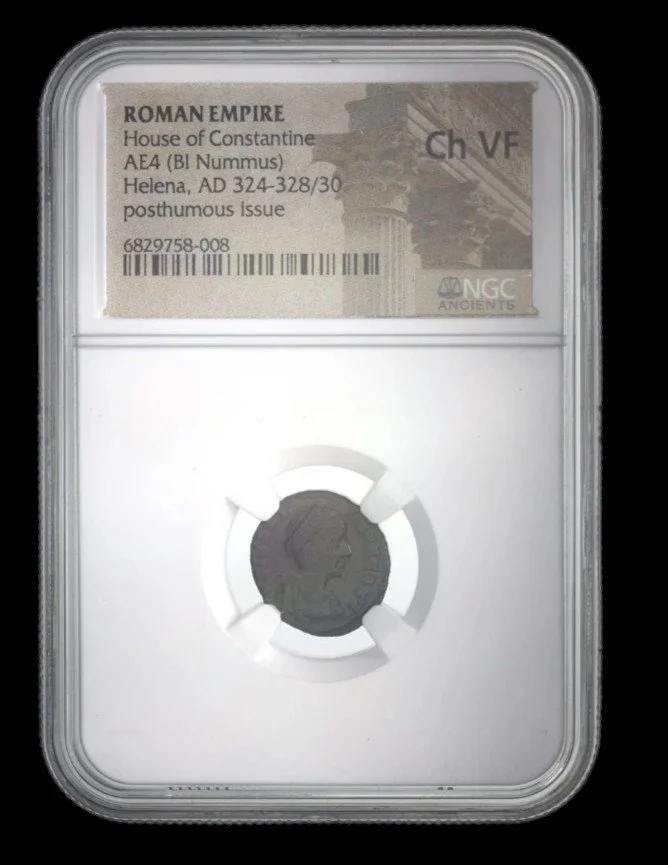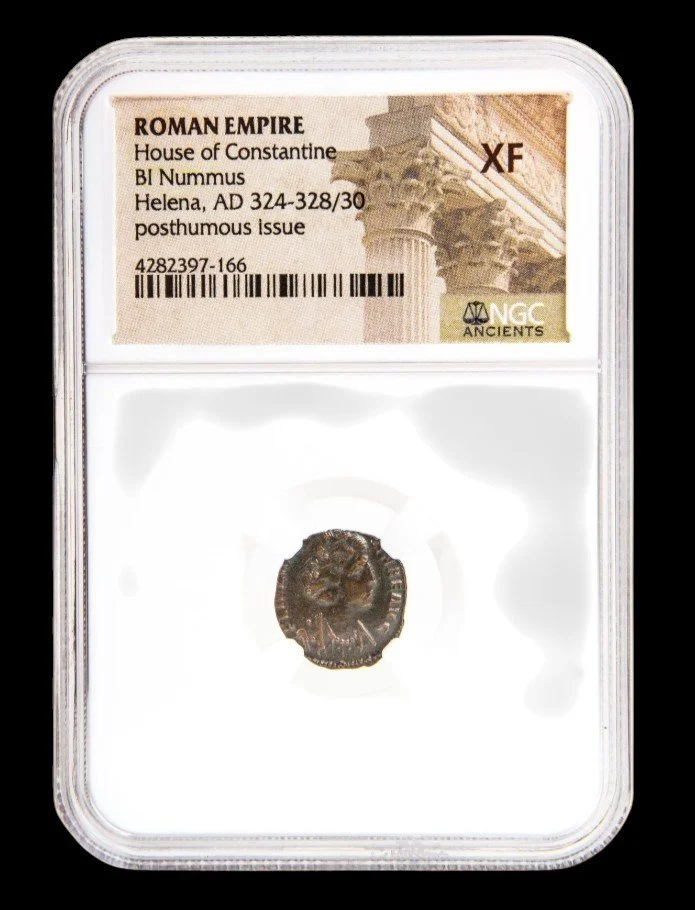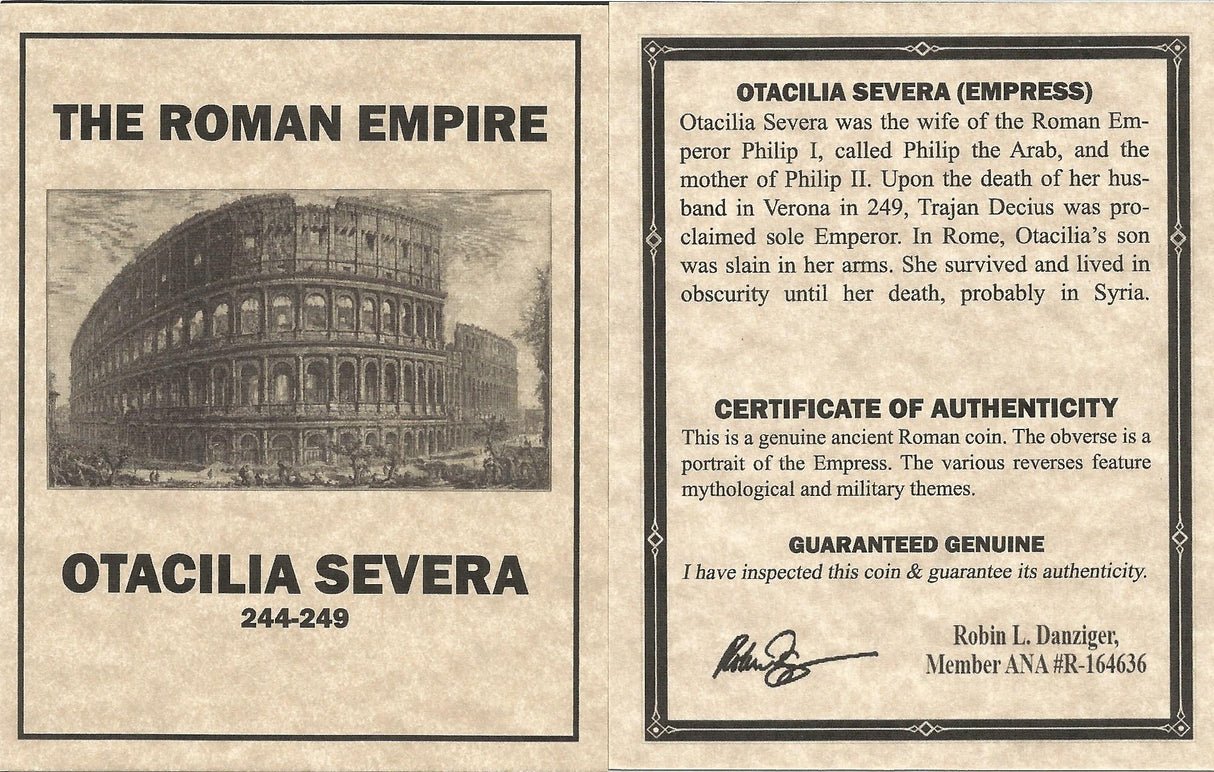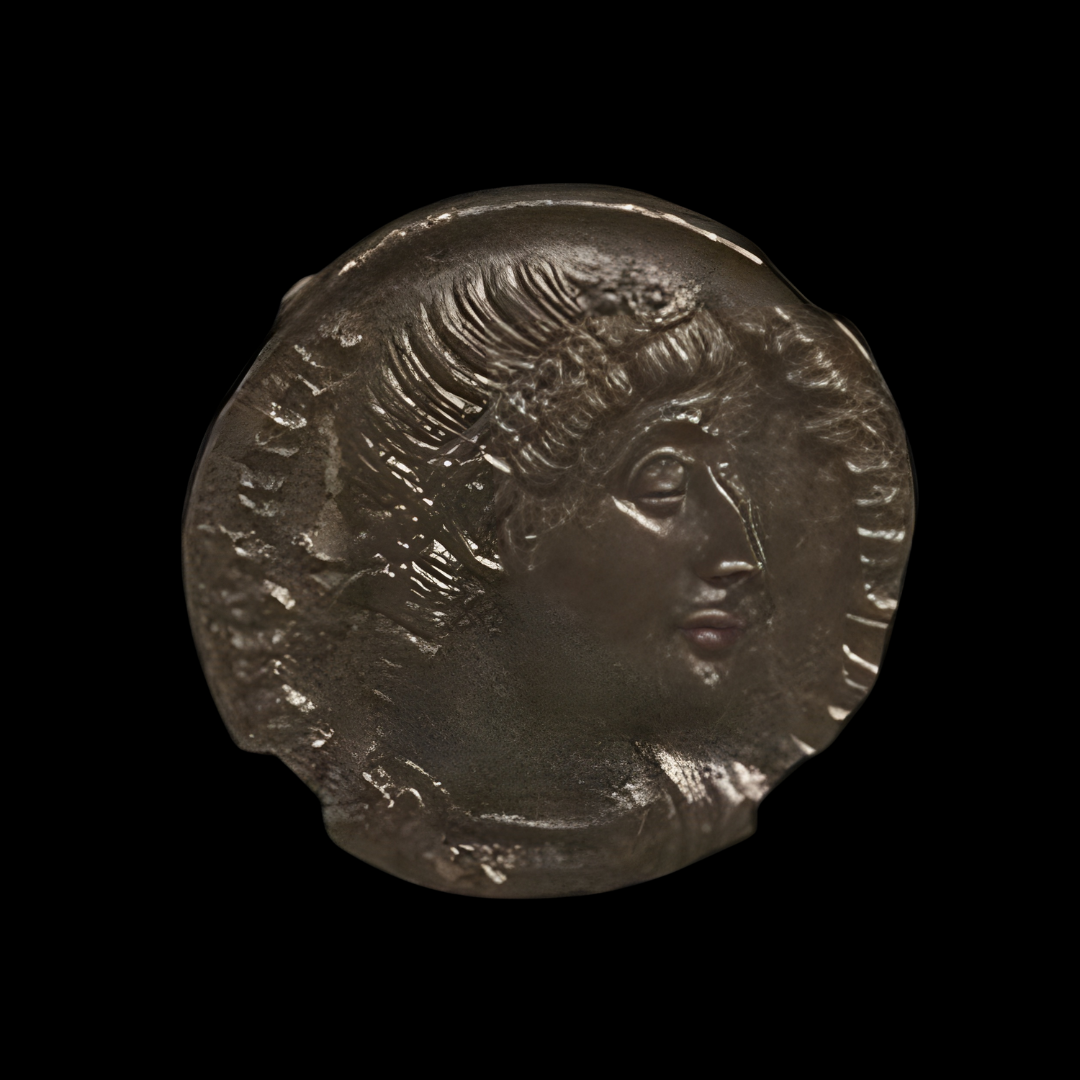 Image 1 of 2
Image 1 of 2

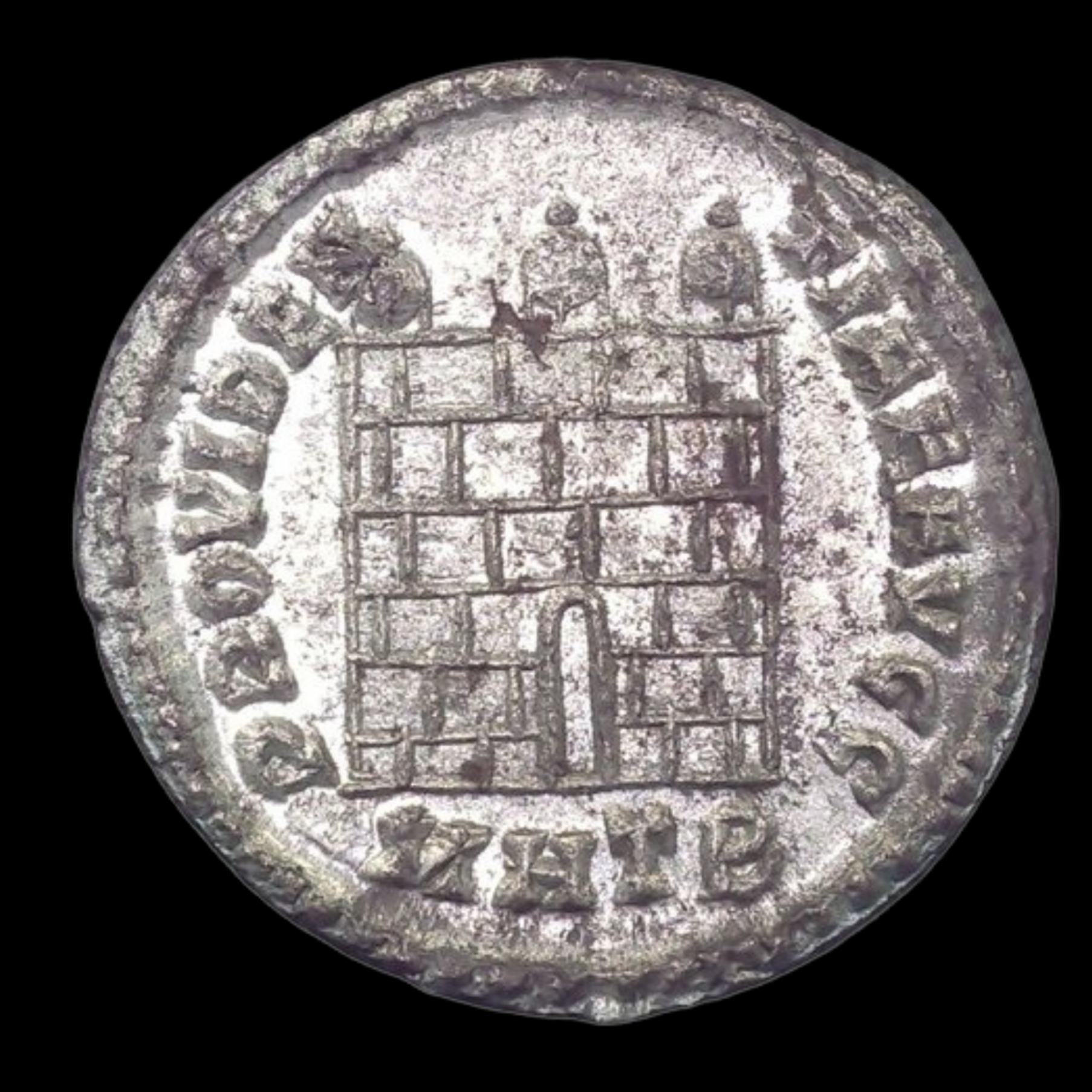 Image 2 of 2
Image 2 of 2



Roman Bronze Reduced Follis of Constantine I (about 1708 years ago)
This bronze coin was struck during the reign of Constantine I (the Great) at the mint of Heraclea (modern Marmara Ereğlisi, Turkey). As the Roman Empire underwent significant religious and administrative transformation, Constantine's coinage reflected both traditional Roman imagery and new Christian influences.
Coin Description:
Front side: Laureate bust of Constantine I facing left, holding ceremonial handkerchief (mappa), globe, and scepter; Latin inscription "IMP CONSTA-NTINVS" (Emperor Constantine)
Back side: Camp gate with three turrets and no doors; Latin inscription "PROVIDEN-TIAE AVGG" (to the Providence of the Emperors); mint mark "MHTB" in exergue (bottom section)
Technical Details:
Bronze composition, weighing 2.90 grams
Reduced Follis denomination (standard bronze coin of the period)
References: RIC-16, officina B=2 (C1)
No certification mentioned
Date: 317 CE, minted at Heraclea
Condition: Not specified
Historical Significance:
This coin was issued during Constantine's rise to power, shortly after defeating his rival Licinius at the Battle of Cibalae (316 CE). The fortress gate symbolizes the security of the empire, while the "Providence" inscription acknowledges divine favor. Constantine would go on to reunify the Roman Empire and establish Constantinople (modern Istanbul) as its new capital. His reign marked a pivotal transition period as Christianity began to receive imperial support, although this coin still uses primarily traditional Roman imagery.
This bronze coin was struck during the reign of Constantine I (the Great) at the mint of Heraclea (modern Marmara Ereğlisi, Turkey). As the Roman Empire underwent significant religious and administrative transformation, Constantine's coinage reflected both traditional Roman imagery and new Christian influences.
Coin Description:
Front side: Laureate bust of Constantine I facing left, holding ceremonial handkerchief (mappa), globe, and scepter; Latin inscription "IMP CONSTA-NTINVS" (Emperor Constantine)
Back side: Camp gate with three turrets and no doors; Latin inscription "PROVIDEN-TIAE AVGG" (to the Providence of the Emperors); mint mark "MHTB" in exergue (bottom section)
Technical Details:
Bronze composition, weighing 2.90 grams
Reduced Follis denomination (standard bronze coin of the period)
References: RIC-16, officina B=2 (C1)
No certification mentioned
Date: 317 CE, minted at Heraclea
Condition: Not specified
Historical Significance:
This coin was issued during Constantine's rise to power, shortly after defeating his rival Licinius at the Battle of Cibalae (316 CE). The fortress gate symbolizes the security of the empire, while the "Providence" inscription acknowledges divine favor. Constantine would go on to reunify the Roman Empire and establish Constantinople (modern Istanbul) as its new capital. His reign marked a pivotal transition period as Christianity began to receive imperial support, although this coin still uses primarily traditional Roman imagery.


